Childhood Acute Myeloid Leukemia/Other Myeloid Malignancies Treatment (PDQ®)
General Information About Childhood Acute Myeloid Leukemia and Other Myeloid Malignancies
Leukemia and other diseases of the blood and bone marrow may affect red blood cells, white blood cells, and platelets.
Normally, the
Red blood cells that carryoxygen and other materials to alltissues of the body.White blood cells that fight
infection and disease.Platelets that help prevent bleeding by causingblood clots to form.
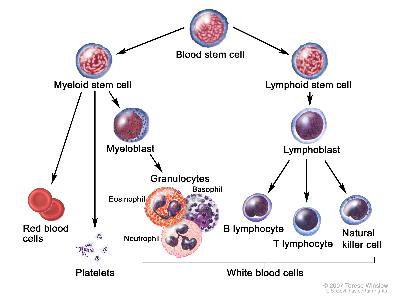
Childhood acute myeloid leukemia (AML) is a type of cancer in which the bone marrow makes a large number of abnormal blood cells.
Cancers that are
In AML, the myeloid stem cells usually develop into a type of immature white blood cell called myeloblasts (or myeloid
There are subtypes of AML based on the type of blood cell that is affected. The treatment of AML is different when it is a subtype called
Other myeloid diseases can affect the blood and bone marrow.
Chronic myelogenous leukemia
In
Juvenile myelomonocytic leukemia
Transient myeloproliferative disorder
Transient
Myelodysplastic syndromes
In
This summary is about childhood AML, childhood CML, JMML, TMD, and MDS. See the following
Hairy Cell Leukemia Treatment
Myelodysplastic Syndromes Treatment
Myelodysplastic/Myeloproliferative Neoplasms Treatment
The risk factors for developing childhood AML, childhood CML, JMML, TMD, and MDS are similar.
Anything that increases your risk of getting a disease is called a
Having a brother or sister, especially a twin, with leukemia.
Being Hispanic.
Being exposed to cigarette smoke or alcohol before birth.
Having a history of MDS (also called
preleukemia ) oraplastic anemia .Past treatment with
chemotherapy orradiation therapy .Being exposed to
ionizing radiation orchemicals such asbenzene .Having certain
genetic disorders, such as:Down syndrome.
Fanconi anemia .Neurofibromatosis type 1 .Noonan syndrome .Shwachman-Diamond syndrome .
Possible signs of childhood AML, childhood CML, JMML, or MDS include fever, feeling tired, and easy bleeding or bruising.
These and other
Fever with or without an infection.Night sweats.
Shortness of breath.
Weakness or feeling tired.
Easy bruising or bleeding.
Petechiae (flat, pinpoint spots under the skin caused by bleeding).Pain in the bones or joints.
Pain or feeling of fullness below the ribs.
Painless lumps in the neck, underarm,
stomach ,groin , or other parts of the body. When seen in childhood AML, these lumps, called leukemia cutis, may be blue or purple.Painless lumps that are sometimes around the eyes. These lumps, called
chloromas , are sometimes seen in childhood AML and may be blue-green.An
eczema -like skin rash.
The symptoms of TMD may include the following:
Swelling all over the body.
Shortness of breath.
Trouble breathing.
Weakness or feeling tired.
Pain below the ribs.
Tests that examine the blood and bone marrow are used to detect (find) and diagnose childhood AML, childhood CML, JMML, TMD, and MDS.
The following tests and procedures may be used:
Physical exam and history: An exam of the body to check general signs of health, including checking for signs of disease, such as lumps or anything else that seems unusual. A history of the patient’s health habits and past illnesses and treatments will also be taken.Complete blood count (CBC) with differential: A procedure in which a sample of blood is drawn and checked for the following:The number of red blood cells and platelets.
The number and type of white blood cells.
The amount of
hemoglobin (theprotein that carriesoxygen ) in the red blood cells.The portion of the blood sample made up of red blood cells.
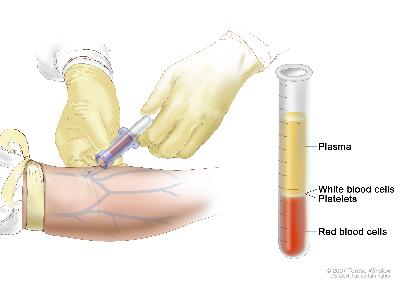 Complete blood count (CBC). Blood is collected by inserting a needle into a vein and allowing the blood to flow into a tube. The blood sample is sent to the laboratory and the red blood cells, white blood cells, and platelets are counted. The CBC is used to test for, diagnose, and monitor many different conditions.
Complete blood count (CBC). Blood is collected by inserting a needle into a vein and allowing the blood to flow into a tube. The blood sample is sent to the laboratory and the red blood cells, white blood cells, and platelets are counted. The CBC is used to test for, diagnose, and monitor many different conditions.Blood chemistry studies : A procedure in which a blood sample is checked to measure the amounts of certain substances released into the blood byorgans and tissues in the body. An unusual (higher or lower than normal) amount of a substance can be a sign of disease in the organ or tissue that makes it.Chest x-ray : Anx-ray of the organs and bones inside the chest. An x-ray is a type of energy beam that can go through the body and onto film, making a picture of areas inside the body.Peripheral blood smear : A procedure in which a sample of blood is checked for blast cells, number and kinds of white blood cells, number of platelets, and changes in the shape of the blood cells.Biopsy : The removal of cells or tissues so they can be viewed under amicroscope by apathologist to check for signs of cancer. Biopsies that may be done for childhood AML include the following:Bone marrow aspiration andbiopsy : The removal of bone marrow, blood, and a small piece of bone by inserting a hollow needle into the hipbone or breastbone.Tumor biopsy: A biopsy of a chloroma may be done.Lymph node biopsy: The removal of all or part of a lymph node.
Cytogenetic analysis: Alaboratory test in which cells in a sample of blood or bone marrow are viewed under a microscope to look for certain changes in thechromosomes .Immunophenotyping : A process used to identify cells, based on the types ofantigens ormarkers on the surface of the cell, that may include special staining of the blood and bone marrow cells. This process is used todiagnose the subtype of AML by comparing the cancer cells to normal cells of the immune system.FISH (fluorescence in situ hybridization): A laboratory technique used to look atgenes or chromosomes in cells and tissues. Pieces ofDNA that contain a fluorescent dye are made in the laboratory and added to cells or tissues on a glass slide. When these pieces of DNA bind to specific genes or areas of chromosomes on the slide, they light up when viewed under a microscope with a special light.Reverse transcription–polymerase chain reaction test (RT–PCR): A laboratory test in which cells in a sample of tissue are studied using chemicals to look for certain changes in the structure or function of genes.
Lumbar puncture : A procedure used to collectcerebrospinal fluid from thespinal column . This is done by placing a needle into the spinal column. This procedure is also called an LP or spinal tap.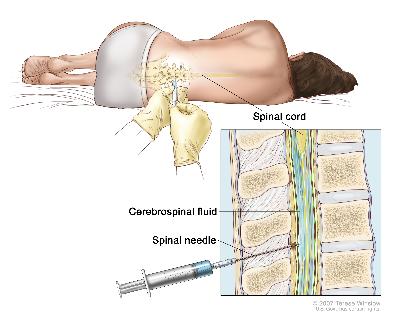 Lumbar puncture. A patient lies in a curled position on a table. After a small area on the lower back is numbed, a spinal needle (a long, thin needle) is inserted into the lower part of the spinal column to remove cerebrospinal fluid (CSF, shown in blue). The fluid may be sent to a laboratory for testing.
Lumbar puncture. A patient lies in a curled position on a table. After a small area on the lower back is numbed, a spinal needle (a long, thin needle) is inserted into the lower part of the spinal column to remove cerebrospinal fluid (CSF, shown in blue). The fluid may be sent to a laboratory for testing.
Certain factors affect prognosis (chance of recovery) and treatment options.
The
The age of the child at diagnosis.
The race or ethnic group of the child.
Whether the child is greatly overweight.
Number of white blood cells in the blood at diagnosis.
Whether the AML was caused by previous anticancer treatment.
The subtype of AML.
Whether there are certain chromosome or gene changes in the leukemia cells.
Whether the child has Down syndrome. Most children with AML and Down syndrome can be cured of their leukemia.
Whether the child has leukemia in the central nervous system (brain and spinal cord).
How quickly the leukemia responds to initial treatment.
Whether the AML is newly diagnosed or has
recurred (come back) after being treated.The length of time since treatment ended, for AML that has recurred.
The prognosis and treatment options for childhood CML depend on how long it has been since the patient was diagnosed and how many blast cells are in the blood.
The prognosis (chance of recovery) and treatment options for JMML depend on the following:
The age of the child at diagnosis.
How many red blood cells, white blood cells, or platelets are in the blood.
Whether the JMML is untreated or has recurred after treatment.
The prognosis (chance of recovery) and treatment options for MDS depend on the following:
Whether the MDS was caused by previous cancer treatment.
How low the numbers of red blood cells, white blood cells, or platelets are.
Whether the MDS is untreated or has recurred after treatment.
Stages of Childhood Acute Myeloid Leukemia and Other Myeloid Malignancies
Once childhood acute myeloid leukemia (AML) has been diagnosed, tests are done to find out if the cancer has spread to other parts of the body.
The extent or spread of
Lumbar puncture : A procedure used to collectcerebrospinal fluid (CSF) from thespinal column . This is done by placing a needle into the spinal column. This procedure is also called an LP or spinal tap.Biopsy of thetesticles ,ovaries , or skin: The removal ofcells ortissues from the testicles, ovaries, or skin so they can be viewed under a microscope to check for signs of cancer. This is done only if something unusual about the testicles, ovaries, or skin is found during thephysical exam .
There are three ways that cancer spreads in the body.
When cancer
Through the blood. Cancer cells travel through the blood, invade solid
tissues in the body, such as the brain or heart, and form a solid tumor.Through the
lymph system . Cancer cells invade the lymph system, travel through thelymph vessels , and form a solid tumor in other parts of the body.Through solid tissue. Cancer cells that have formed a solid tumor spread to tissues in the surrounding area.
The new (
There is no standard staging system for childhood AML, childhood chronic myelogenous leukemia (CML), juvenile myelomonocytic leukemia (JMML), transient myeloproliferative disorder (TMD), or myelodysplastic syndromes (MDS).
Childhood AML is described as newly
Newly diagnosed childhood AML
Newly
More than 20% of the
cells in thebone marrow areblasts (leukemia cells).or
Less than 20% of the cells in the bone marrow are blasts and there is a specific change in the
chromosome .
Childhood AML in remission
In childhood
The
complete blood count is almost normal.Less than 5% of the
cells in thebone marrow areblasts (leukemia cells).There are no signs or
symptoms of leukemia in the brain,spinal cord , or other parts of the body.
Recurrent Childhood Acute Myeloid Leukemia
Treatment Option Overview
There are different types of treatment for children with acute myeloid leukemia (AML), chronic myelogenous leukemia (CML), juvenile myelomonocytic leukemia (JMML), transient myeloproliferative disorder (TMD), or myelodysplastic syndromes (MDS).
Different types of treatment are available for children with
Because cancer in children is rare, taking part in a clinical trial should be considered. Some clinical trials are open only to patients who have not started treatment.
Children with AML, CML, JMML, TMD, or MDS should have their treatment planned by a team of health care providers who are experts in treating childhood leukemia and other diseases of the blood.
Treatment will be overseen by a
Hematologist .Medical oncologist .Pediatric surgeon .Radiation oncologist .Neurologist .Neuropathologist .Neuroradiologist .Pediatric nurse specialist .Social worker .Rehabilitation specialist .Psychologist .
Some cancer treatments cause side effects months or years after treatment has ended.
Regular
Physical problems.
Changes in mood, feelings, thinking, learning, or memory.
Second cancers (new types of cancer).
Some late effects may be treated or controlled. It is important that parents of children who are treated for AML or other
The treatment of childhood AML usually has two phases.
The treatment of childhood AML is done in phases:
Induction therapy : This is the first phase of treatment. Its purpose is to kill the leukemiacells in the blood andbone marrow . This puts the leukemia intoremission .Consolidation /intensification therapy : This is the second phase of treatment. It begins once the leukemia is in remission. The purpose ofpostremission therapy is to kill any remaining leukemia cells that may not be active but could begin to regrow and cause arelapse .
Treatment called
Seven types of standard treatment are used for childhood AML, childhood CML, JMML, TMD, or MDS.
Chemotherapy
Chemotherapy is a cancer treatment that uses
The way the chemotherapy is given depends on the type of cancer being treated.
In AML, the leukemia cells may spread to the brain and/or spinal cord. Anticancer drugs given by mouth or vein to treat AML cannot cross the
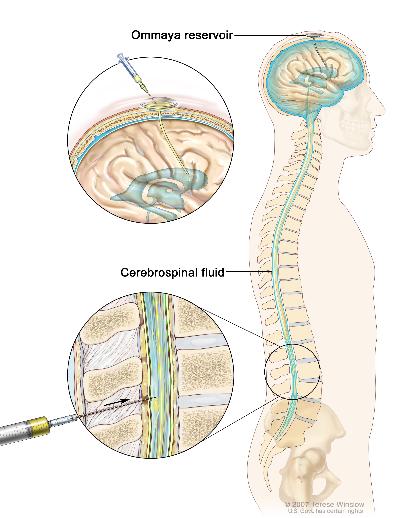
See Drugs Approved for Acute Myeloid Leukemia for more information.
Radiation therapy
Radiation therapy is a cancer treatment that uses high-energy
Stem cell transplantation
Targeted therapy with a tyrosine kinase inhibitor
TKIs may be used in combination with other anticancer drugs as
See Drugs Approved for Myeloproliferative Disorders for more information.
Other drug therapy
See Drugs Approved for Acute Myeloid Leukemia for more information.
Watchful waiting
Supportive care
Transfusion therapy : A way of givingred blood cells , white blood cells, orplatelets to replace blood cells destroyed by disease or cancer treatment. The blood may be donated from another person or it may have been taken from the person earlier and stored until needed.Drug therapy, such as
antibiotics .Leukapheresis : A procedure in which a special machine is used to remove white blood cells from the blood. Blood is taken from the patient and put through a blood cell separator where the white blood cells are removed. The rest of the blood is then returned to the patient's bloodstream.
New types of treatment are being tested in clinical trials.
This summary section describes treatments that are being studied in clinical trials. It may not mention every new treatment being studied. Information about clinical trials is available from the NCI Web site.
Targeted therapy
Targeted therapy is a type of treatment that uses drugs or other substances to identify and attack specific cancer cells without harming normal cells.
Monoclonal antibody therapy uses
Proteasome inhibitors break down
Natural killer (NK) cells are white blood cells that can kill tumor cells. These may be taken from a donor and given to the patient by infusion to help kill leukemia cells.
Patients may want to think about taking part in a clinical trial.
For some patients, taking part in a
Many of today's standard treatments for cancer are based on earlier clinical trials. Patients who take part in a clinical trial may receive the standard treatment or be among the first to receive a new treatment.
Patients who take part in clinical trials also help improve the way cancer will be treated in the future. Even when clinical trials do not lead to effective new treatments, they often answer important questions and help move research forward.
Patients can enter clinical trials before, during, or after starting their cancer treatment.
Some clinical trials only include patients who have not yet received treatment. Other trials test treatments for patients whose cancer has not gotten better. There are also clinical trials that test new ways to stop cancer from
Clinical trials are taking place in many parts of the country. See the Treatment Options section that follows for links to current treatment clinical trials. These have been retrieved from
Follow-up tests may be needed.
Some of the tests that were done to
Some of the tests will continue to be done from time to time after treatment has ended. The results of these tests can show if your condition has changed or if the cancer has
Treatment Options for Childhood Acute Myeloid Leukemia, Myelodysplastic Syndromes, and Juvenile Myelomonocytic Leukemia
A link to a list of current
Newly Diagnosed Childhood Acute Myeloid Leukemia
Treatment of newly
Combination chemotherapy pluscentral nervous system sanctuary therapy withintrathecal chemotherapy .A
clinical trial comparing differentchemotherapy regimens (doses and schedules of treatment).A clinical trial of combination chemotherapy and
targeted therapy with aproteasome inhibitor or atyrosine kinase inhibitor with or withoutstem cell transplant .
Treatment of newly diagnosed childhood acute leukemia with a
Check for U.S. clinical trials from NCI's list of cancer clinical trials that are now accepting patients with untreated childhood acute myeloid leukemia and other myeloid malignancies. For more specific results, refine the search by using other search features, such as the location of the trial, the type of treatment, or the name of the drug. General information about clinical trials is available from the NCI Web site.
Childhood Acute Myeloid Leukemia in Remission
Treatment of childhood
Combination chemotherapy .Stem cell transplant .A
clinical trial oftargeted therapy withnatural killer cell transplant afterchemotherapy .A
clinical trial of combination chemotherapy andtargeted therapy with aproteasome inhibitor or atyrosine kinase inhibitor with or withoutstem cell transplant .
Check for U.S. clinical trials from NCI's list of cancer clinical trials that are now accepting patients with childhood acute myeloid leukemia in remission. For more specific results, refine the search by using other search features, such as the location of the trial, the type of treatment, or the name of the drug. General information about clinical trials is available from the NCI Web site.
Recurrent Childhood Acute Myeloid Leukemia
Treatment of
Combination chemotherapy Combination chemotherapy and
stem cell transplant .A second stem cell transplant.
A
clinical trial of a new anticancerdrug .A clinical trial of combinations of new anticancer drugs, new
biologic agents , and stem cell transplant using different sources ofstem cells .
Check for U.S. clinical trials from NCI's list of cancer clinical trials that are now accepting patients with recurrent childhood acute myeloid leukemia. For more specific results, refine the search by using other search features, such as the location of the trial, the type of treatment, or the name of the drug. General information about clinical trials is available from the NCI Web site.
Acute Promyelocytic Leukemia
Treatment of
All-trans retinoic acid (ATRA) pluschemotherapy .Arsenic trioxide therapy .Central nervous system sanctuary therapy withintrathecal chemotherapy .A
clinical trial of arsenic trioxide therapy and all-trans retinoic acid plus low-dose chemotherapy.
Check for U.S. clinical trials from NCI's list of cancer clinical trials that are now accepting patients with childhood acute promyelocytic leukemia (M3). For more specific results, refine the search by using other search features, such as the location of the trial, the type of treatment, or the name of the drug. General information about clinical trials is available from the NCI Web site.
Recurrent Acute Promyelocytic Leukemia
Treatment of
All-trans retinoic acid therapy (ATRA) pluschemotherapy .Arsenic trioxide therapy.Targeted therapy with amonoclonal antibody .Stem cell transplant .A
clinical trial oftargeted therapy with aproteasome inhibitor andchemotherapy .A clinical trial of new combinations of chemotherapy.
A clinical trial of targeted therapy with a
tyrosine kinase inhibitor .
Children with Down Syndrome and AML
Treatment of
Childhood Chronic Myelogenous Leukemia
Treatment for childhood
Targeted therapy withGleevec .Stem cell transplant or othertyrosine kinase inhibitors for patients who do not respond totherapy with Gleevec or whose disease comes back after treatment.A
clinical trial of targeted therapy with othertyrosine kinase inhibitors .A clinical trial of stem cell transplant using lower
doses ofchemotherapy .
Check for U.S. clinical trials from NCI's list of cancer clinical trials that are now accepting patients with childhood chronic myelogenous leukemia. For more specific results, refine the search by using other search features, such as the location of the trial, the type of treatment, or the name of the drug. General information about clinical trials is available from the NCI Web site.
Juvenile Myelomonocytic Leukemia
Treatment of
Check for U.S. clinical trials from NCI's list of cancer clinical trials that are now accepting patients with juvenile myelomonocytic leukemia. For more specific results, refine the search by using other search features, such as the location of the trial, the type of treatment, or the name of the drug. General information about clinical trials is available from the NCI Web site.
Transient Myeloproliferative Disorder
Transient
Transfusion therapy .Leukapheresis .Chemotherapy .
Check for U.S. clinical trials from NCI's list of cancer clinical trials that are now accepting patients with acute myeloid leukemia/transient myeloproliferative disorder. For more specific results, refine the search by using other search features, such as the location of the trial, the type of treatment, or the name of the drug. General information about clinical trials is available from the NCI Web site.
Myelodysplastic Syndromes
Treatment of
Watchful waiting .Stem cell transplant .Combination chemotherapy .Lenalidomide therapy .A
clinical trial of stem cell transplant using lowerdoses ofchemotherapy .A clinical trial of a new anticancer
drug ortargeted therapy .
If the MDS
Check for U.S. clinical trials from NCI's list of cancer clinical trials that are now accepting patients with childhood myelodysplastic syndromes. For more specific results, refine the search by using other search features, such as the location of the trial, the type of treatment, or the name of the drug. General information about clinical trials is available from the NCI Web site.
To Learn More About Childhood Acute Myeloid Leukemia and Other Myeloid Malignancies
For more information from the
What You Need to Know About™ Leukemia
Drugs Approved for Acute Myeloid Leukemia
Drugs Approved for Myeloproliferative Disorders
Understanding Cancer Series: Blood Stem Cell Transplants
Bone Marrow Transplantation and Peripheral Blood Stem Cell Transplantation
Targeted Cancer Therapies
Understanding Cancer Series: Targeted Therapies
For more childhood
What You Need to Know About™ Cancer
Childhood Cancers
CureSearch for Children's Cancer
Late Effects of Treatment for Childhood Cancer
Adolescents and Young Adults with Cancer
Young People with Cancer: A Handbook for Parents
Care for Children and Adolescents with Cancer
Understanding Cancer Series: Cancer
Cancer Staging
Coping with Cancer: Supportive and Palliative Care
Cancer Library
Information for Survivors/Caregivers/Advocates
Get More Information From NCI
Call 1-800-4-CANCER
For more information, U.S. residents may call the National Cancer Institute's (NCI's) Cancer Information Service toll-free at 1-800-4-CANCER (1-800-422-6237) Monday through Friday from 8:00 a.m. to 8:00 p.m., Eastern Time. A trained Cancer Information Specialist is available to answer your questions.
Chat online
The NCI's LiveHelp® online chat service provides Internet users with the ability to chat online with an Information Specialist. The service is available from 8:00 a.m. to 11:00 p.m. Eastern time, Monday through Friday. Information Specialists can help Internet users find information on NCI Web sites and answer questions about cancer.
Write to us
For more information from the NCI, please write to this address:
NCI Public Inquiries Office
Suite 3036A
6116 Executive Boulevard, MSC8322
Bethesda, MD 20892-8322
Search the NCI Web site
The NCI Web site provides online access to information on cancer, clinical trials, and other Web sites and organizations that offer support and resources for cancer patients and their families. For a quick search, use the search box in the upper right corner of each Web page. The results for a wide range of search terms will include a list of "Best Bets," editorially chosen Web pages that are most closely related to the search term entered.
There are also many other places to get materials and information about cancer treatment and services. Hospitals in your area may have information about local and regional agencies that have information on finances, getting to and from treatment, receiving care at home, and dealing with problems related to cancer treatment.
Find Publications
The NCI has booklets and other materials for patients, health professionals, and the public. These publications discuss types of cancer, methods of cancer treatment, coping with cancer, and clinical trials. Some publications provide information on tests for cancer, cancer causes and prevention, cancer statistics, and NCI research activities. NCI materials on these and other topics may be ordered online or printed directly from the NCI Publications Locator. These materials can also be ordered by telephone from the Cancer Information Service toll-free at 1-800-4-CANCER (1-800-422-6237).
Changes to This Summary (12/15/2011)
The
Changes were made to this summary to match those made to the health professional version.
About PDQ
PDQ is a comprehensive cancer database available on NCI's Web site.
PDQ is the National Cancer Institute's (NCI's) comprehensive cancer information database. Most of the information contained in PDQ is available online at NCI's Web site. PDQ is provided as a service of the NCI. The NCI is part of the National Institutes of Health, the federal government's focal point for biomedical research.
PDQ contains cancer information summaries.
The PDQ database contains summaries of the latest published information on cancer prevention, detection, genetics, treatment, supportive care, and complementary and alternative medicine. Most summaries are available in two versions. The health professional versions provide detailed information written in technical language. The patient versions are written in easy-to-understand, nontechnical language. Both versions provide current and accurate cancer information.
The PDQ cancer information summaries are developed by cancer experts and reviewed regularly.
Editorial Boards made up of experts in oncology and related specialties are responsible for writing and maintaining the cancer information summaries. The summaries are reviewed regularly and changes are made as new information becomes available. The date on each summary ("Date Last Modified") indicates the time of the most recent change.
PDQ also contains information on clinical trials.
A clinical trial is a study to answer a scientific question, such as whether one treatment is better than another. Trials are based on past studies and what has been learned in the laboratory. Each trial answers certain scientific questions in order to find new and better ways to help cancer patients. During treatment clinical trials, information is collected about the effects of a new treatment and how well it works. If a clinical trial shows that a new treatment is better than one currently being used, the new treatment may become "standard." In the United States, about two-thirds of children with cancer are treated in a clinical trial at some point in their illness.
Listings of clinical trials are included in PDQ and are available online at NCI's Web site. Descriptions of the trials are available in health professional and patient versions. For additional help in locating a childhood cancer clinical trial, call the Cancer Information Service at 1-800-4-CANCER (1-800-422-6237).
The PDQ database contains listings of groups specializing in clinical trials.
The Children's Oncology Group (COG) is the major group that organizes clinical trials for childhood cancers in the United States. Information about contacting COG is available on the NCI Web site or from the Cancer Information Service at 1-800-4-CANCER (1-800-422-6237).
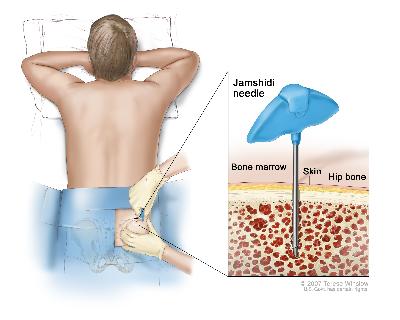
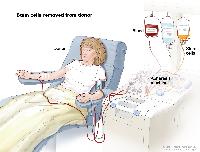
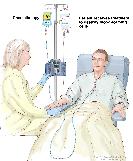
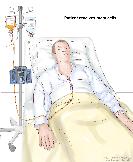
Connect with us:
Download our App: